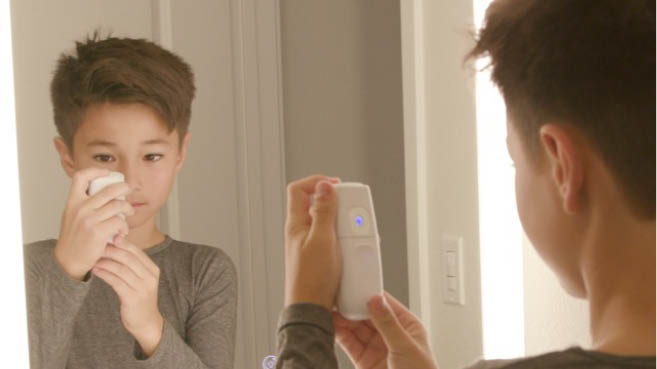We tend to think of myopia and progressive myopia as one collective issue affecting the anterior segment. Nearsightedness is viewed as an inconvenience that is correctable with surgery or glasses. Progressive myopia, however, is a serious disease of the posterior segment in which lengthening of the eye begins in childhood and continues for the first 18 to 20 years of life. As the sclera and retina stretch, patients are at higher risk of retinal detachment, atrophy, and myopic degeneration as well as glaucoma and cataract.
Historically, approximately 20% of the US population was myopic. Today, myopia is an epidemic that affects close to 40% of Americans, and this number is only expected to grow. A recent study revealed that, by 2050, half of the world’s population—nearly 5 billion people—will be myopic.1 In Asian countries, 90% of children have myopia; in Thailand specifically, 80% of children use some type of atropine therapy to ward off myopic progression.2
RESEARCH COMING OF AGE
This massive worldwide problem has been widely ignored due to the lack of a viable solution. Now, however, research into atropine and its therapeutic effect on myopia progression is coming of age. Large randomized, controlled studies of atropine such as ATOM-1 and ATOM-2 (Atropine for the Treatment of Myopia) have shown tremendous efficacy in slowing the progression of myopia (sometimes by as much as 60%).3,4 Additionally, the AAO has stated that there is level 1 evidence to support the use of atropine to prevent myopic progression.
Atropine is an old drug that is rarely used in ophthalmology due to difficulty in achieving the correct dosing and its unpleasant side effects. However, at a low concentration, it is possible to preserve the therapeutic effect of atropine and eliminate some of its unwanted effects. Further, low doses, especially atropine 0.01%, have shown the greatest efficacy.5

Figure 1 | A child using the Optejet dispenser, Eyenovia’s microdosing technology.
A NEW SOLUTION
Currently, there is no FDA-approved medication for progressive myopia, so eye care specialists must depend on compounding pharmacies to create safe and tolerable formulations of atropine. Enter MicroPine (Eyenovia), a proprietary microdose formulation of atropine for the prevention of progressive myopia, delivered via the Optejet dispenser (Eyenovia).
The Optejet dispenser (Eyenovia) utilizes piezo-print technology to allow for high-precision, volumetrically topical medications to be applied directly to the ocular surface. Microdosing a drug to coat the ocular surface, in the same way an ink-jet printer works, may be critically important to reducing some of the side effects of traditional eye drops and may help improve tolerability and eliminate systemic absorption.
Additionally, Eyenovia’s microdosing platform has built-in mobile e-health integration aimed at improving compliance, monitoring, and disease management. Patients and physicians can receive real-time access to treatment data, providing more personalized and intelligent therapy. For young, technology-demanding patients, having a smart device to guide them in their myopia treatment should not only augment their treatment compliance but also facilitate their families’ engagement in their care. We believe that children and their family members would welcome a solution that is more advanced than a 200-year-old eye drop paradigm.

FUTURE OUTLOOK
Eyenovia is working with the FDA to lock down the parameters of a large randomized, controlled trial of MicroPine that could include more than 20 centers and run as long as 3 years to observe sustained effects. We hope to be able to follow in the footsteps of ATOM-1 and ATOM-2, which have previously established evidence for the efficacy and safety of low-dose atropine. We believe that we will be able to validate MicroPine in an FDA study based on what has been seen in multiple previous trials.
The potential patient population will include children with progressive myopia between the ages of 5 and 13 years, who would be taking therapy for the next several years and stabilizing by age 19. The population at risk for progressive myopia is larger than all wet age-related macular degeneration and glaucoma patients combined.
In addition to our progressive myopia program, Eyenovia is pursuing a microdosing indication for chronic angle-closure glaucoma with MicroProst (latanoprost) and pharmacologic mydriasis with MicroStat (phenylephrine-tropicamide); both are in phase 3 development.
It is our hope and belief that microdosing technology will enable the development of new, more advanced therapeutic solutions for multiple ophthalmic conditions.
1. Holden BA, Fricke TR, Wilson DA, et al. Global prevalence of myopia and high myopia and temporal trends from 2000 through 2050. Ophthalmology 2016;123:1036-1042.
2. Morgan IG, Saw SM. Myopia. Lancet. 2012;379(9827):1739-1748.
3. Chia A, Lu QS, Tan D. Five-year clinical trial on atropine for the treatment of myopia 2: myopia control with atropine 0.01% eyedrops. Ophthalmology. 2016;123(2):391-399.
4. Chua WH, Balakrishnan V, Chan YH, et al. Atropine for the treatment of childhood myopia. Ophthalmology. 2006;113:2285-2291.
5. Pineles SL, Kraker RT, VanderVeen DK, et al. Atropine for the prevention of myopia progression in children. Ophthalmology. 2017;124:1857-1866.



